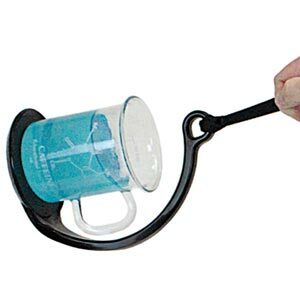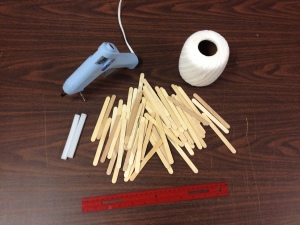April 8, 2015
 By: Donna Giachetti
By: Donna Giachetti
A Lesson on Electricity… with Elmo
Even babies understand the difference between ON and OFF. After mastering peek-a-boo, turning a switch on and off is one of a toddler’s favorite games. What will happen if I press here? Where did that light come from? Who made that noise? Something nearly always happens when a button is pushed, and it leaves children wanting to know more. At least that’s how it went in my house. My son wasn’t satisfied squeezing Tickle Me Elmo’s belly to hear the little guy giggle. He soon figured out how to switch Elmo on-off-on-off so rapidly that the poor fuzzball appeared to have a bad case of the hiccups.
Read the rest of this entry »
 Leave a Comment » |
Leave a Comment » |  College level, electricity, Elementary level, energy, experiments, High School level, Middle School level | Tagged: Educational Innovations, electricity, experiments, hands-on activity, homeschool, parent friendly, PBL, phenomenon based learning, phenomenon-based science, science, variables |
College level, electricity, Elementary level, energy, experiments, High School level, Middle School level | Tagged: Educational Innovations, electricity, experiments, hands-on activity, homeschool, parent friendly, PBL, phenomenon based learning, phenomenon-based science, science, variables |  Permalink
Permalink
 Posted by Donna Giachetti
Posted by Donna Giachetti
March 18, 2015
 by: Ken Byrne
by: Ken Byrne
How many people have been struck by meteorites falling from the sky? The fact of the matter is that we all have been…repeatedly! While injuries from fallen meteorites of significant size are extremely rare, falling all around us and onto us each day are the meteorites smallest siblings, micrometeorites. Read the rest of this entry »
 1 Comment |
1 Comment |  College level, Earth Science, Elementary level, High School level, Middle School level | Tagged: homeschool, meteorites, micrometeorites, parent friendly, PBL, phenomenon based learning, phenomenon-based science, science |
College level, Earth Science, Elementary level, High School level, Middle School level | Tagged: homeschool, meteorites, micrometeorites, parent friendly, PBL, phenomenon based learning, phenomenon-based science, science |  Permalink
Permalink
 Posted by Tami O'Connor
Posted by Tami O'Connor
February 9, 2015
 by: Evan Jones
by: Evan Jones
How the SpillNot works:
When you hold a cup of juice while walking, the juice tends to spill because the cup accelerates forward (ax, FIG.1, green arrow) and backward (-ax) with each step. The juice tips in response to that acceleration, and may spill over the rim of the cup.
 The Spill Not automatically tips the cup so that its top stays parallel to the juice surface (FIG.2). For example, if the juice surface tips to 30 deg, but the cup stays horizontal, the juice could spill. But if the cup also tips to 30 deg, we get no spill! Note that there are only 2 forces on each portion m of juice…the weight mg down, and the buoyancy force Fb of the juice pushing at a right angle to the surface. These two forces result in a horizontal accelerating force ma (in red). We see from FIG.1 that
The Spill Not automatically tips the cup so that its top stays parallel to the juice surface (FIG.2). For example, if the juice surface tips to 30 deg, but the cup stays horizontal, the juice could spill. But if the cup also tips to 30 deg, we get no spill! Note that there are only 2 forces on each portion m of juice…the weight mg down, and the buoyancy force Fb of the juice pushing at a right angle to the surface. These two forces result in a horizontal accelerating force ma (in red). We see from FIG.1 that
Read the rest of this entry »
 2 Comments |
2 Comments |  College level, experiments, High School level, Physics | Tagged: acceleration, centripetal force, hands-on activity, homeschool, parent friendly, PBL, pendulum, phenomenon based learning, phenomenon-based science, Physics, science, Spill not |
College level, experiments, High School level, Physics | Tagged: acceleration, centripetal force, hands-on activity, homeschool, parent friendly, PBL, pendulum, phenomenon based learning, phenomenon-based science, Physics, science, Spill not |  Permalink
Permalink
 Posted by Tami O'Connor
Posted by Tami O'Connor
January 13, 2015
 by: Tami O’Connor
by: Tami O’Connor
Energy is transported by waves. That’s an important concept to teach students, but it’s not always an easy one for them to understand. At the beginning of our unit on the electromagnetic spectrum, my class and I made wave models so they could all see and understand how waves work.
The kids loved this activity when we did it in class and, when I run into former students, some tell me they still have their wave models hanging from their ceilings more than 10 years after we made them!
Materials:
- Popsicle Sticks
- Kite String
- Low Melt Glue Gun
- Ruler or Yard Stick
- Tape
- Pen, Pencil, or Marker
Read the rest of this entry »
 1 Comment |
1 Comment |  Elementary level, energy, experiments, High School level, Middle School level, Physics | Tagged: compression waves, DIY, electromagnetic spectrum, energy, homeschool, parent friendly, PBL, phenomenon based learning, phenomenon-based science, science, transverse waves, waves |
Elementary level, energy, experiments, High School level, Middle School level, Physics | Tagged: compression waves, DIY, electromagnetic spectrum, energy, homeschool, parent friendly, PBL, phenomenon based learning, phenomenon-based science, science, transverse waves, waves |  Permalink
Permalink
 Posted by Tami O'Connor
Posted by Tami O'Connor
January 1, 2015
 When the topic is germs, your teaching opportunities can expand in many directions—just like the droplet spread from a sneeze!
When the topic is germs, your teaching opportunities can expand in many directions—just like the droplet spread from a sneeze!
Not sure where to start? Don’t worry, we’ve got you covered.
Here you will find germ-related discussion starters, research ideas, current events worksheets, posters and more. Read the rest of this entry »
 3 Comments |
3 Comments |  Biology, Elementary level, High School level, Middle School level | Tagged: disease transmission, ebola, flu, germs, Glo Germ, hand-washing, homeschool, immunization, mandatory vaccine, parent friendly, PBL, phenomenon based learning, phenomenon-based science, science |
Biology, Elementary level, High School level, Middle School level | Tagged: disease transmission, ebola, flu, germs, Glo Germ, hand-washing, homeschool, immunization, mandatory vaccine, parent friendly, PBL, phenomenon based learning, phenomenon-based science, science |  Permalink
Permalink
 Posted by Donna Giachetti
Posted by Donna Giachetti
 By: Donna Giachetti
By: Donna Giachetti


 Posted by Donna Giachetti
Posted by Donna Giachetti  by: Ken Byrne
by: Ken Byrne by: Evan Jones
by: Evan Jones
 by: Tami O’Connor
by: Tami O’Connor
 When the topic is germs, your teaching opportunities can expand in many directions—just like the droplet spread from a sneeze!
When the topic is germs, your teaching opportunities can expand in many directions—just like the droplet spread from a sneeze!